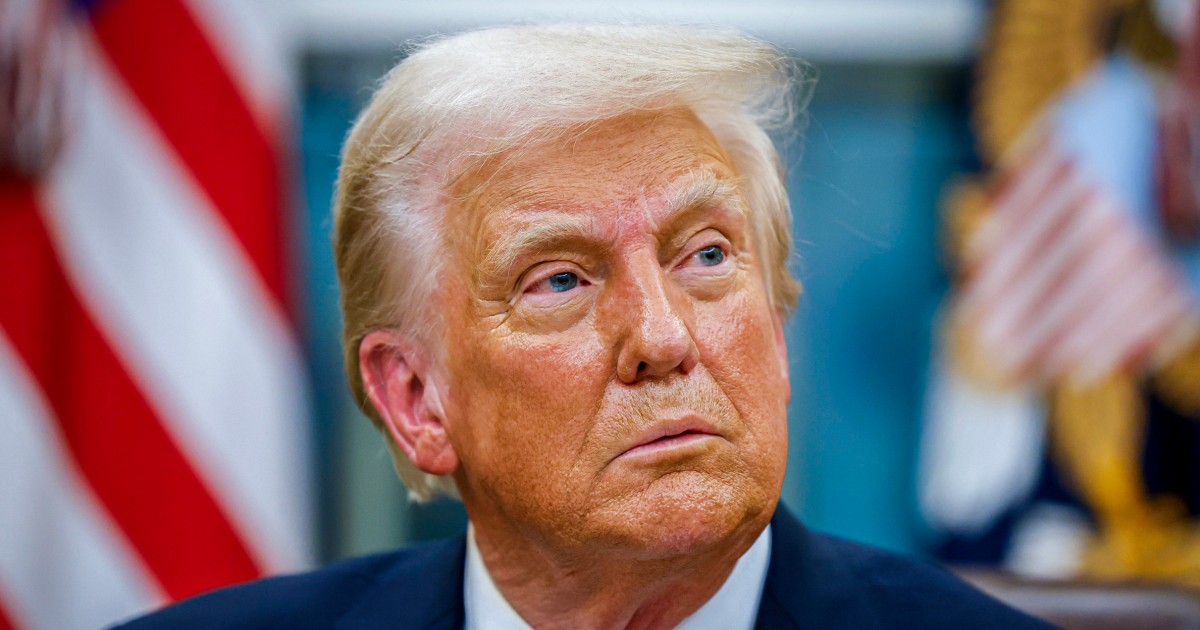Trump's Inauguration: Why Tariffs Were Delayed

Trump's Inauguration: Why Tariffs Were Delayed. Discover more detailed and exciting information on our website. Click the link below to start your adventure: Visit Best Website. Don't miss out!
Table of Contents
Trump's Inauguration: Unpacking the Delay of His Promised Tariffs
Donald Trump's 2017 inauguration ushered in an era of significant economic policy shifts, most notably his campaign promise to impose sweeping tariffs on imported goods. However, the immediate implementation of these protectionist measures faced unexpected delays. Understanding the reasons behind this postponement requires examining the complex interplay of political considerations, economic realities, and internal White House dynamics. This article delves into the key factors that contributed to the delayed rollout of Trump's tariff agenda.
H2: The Campaign Promise: A Foundation Built on Protectionism
During his presidential campaign, Trump consistently championed a protectionist stance, arguing that high tariffs would safeguard American jobs and revitalize domestic industries. He frequently targeted specific countries, notably China, accusing them of unfair trade practices and vowing to impose significant tariffs upon their goods. This resonated strongly with his base, who felt the sting of globalization and the loss of manufacturing jobs. The expectation, therefore, was for swift action following his inauguration.
H2: The Initial Cautious Approach: Economic and Political Realities
Despite the strong rhetoric, the immediate post-inauguration period witnessed a more measured approach to tariff implementation. Several factors contributed to this:
- Economic Concerns: A sudden imposition of widespread tariffs risked triggering retaliatory measures from other countries, potentially leading to a trade war and harming the US economy. Economic advisors cautioned against such a drastic, immediate approach.
- Political Considerations: The complexities of navigating international trade agreements and the potential for negative impacts on key industries required careful consideration and potentially, negotiation with allies and trading partners. A hasty rollout risked alienating key political allies both domestically and internationally.
- Internal White House Dynamics: Reports suggest conflicting views within the Trump administration itself on the speed and scope of tariff implementation. This internal debate further contributed to the delay.
H3: The Gradual Rollout: A Phased Approach to Tariffs
Instead of an immediate deluge of tariffs, the Trump administration adopted a more gradual approach. The initial focus shifted towards investigating specific trade practices and negotiating bilateral trade deals. This allowed for a more targeted and, arguably, less disruptive implementation of tariffs. While the ultimate goal remained protectionist, the method was significantly more nuanced than initially promised.
H2: Key Events Delaying the Tariff Implementation
Several key events and timelines further illustrate the delay:
- Section 232 Investigations: The administration initiated investigations under Section 232 of the Trade Expansion Act of 1962, focusing on the national security implications of steel and aluminum imports. This provided a legal framework for imposing tariffs, but the process itself took time.
- Trade Negotiations: The Trump administration engaged in bilateral trade negotiations with various countries, aiming to secure more favorable trade agreements before implementing tariffs. These negotiations often took months or even years to conclude.
- Internal Policy Debates: Ongoing disagreements within the administration regarding the optimal strategy and timing for tariff implementation contributed to further delays.
H2: Long-Term Impact: The Legacy of Delayed Tariffs
The delayed implementation of Trump's promised tariffs, while initially appearing as a sign of caution, ultimately shaped the overall trajectory of his trade policy. While tariffs were eventually imposed on various goods, the phased approach allowed for adjustments based on economic and political feedback. This approach had both positive and negative consequences, sparking significant debate about the effectiveness and long-term economic implications of protectionist trade policies. Understanding this delay provides crucial context for analyzing the full impact of Trump's economic legacy.
H2: Further Reading and Resources:
For deeper insights into this complex topic, we recommend exploring resources from the Congressional Research Service, the Peterson Institute for International Economics, and reputable news archives covering the Trump administration's trade policies. Understanding the nuances of this policy shift is vital for comprehending the current state of global trade relations.

Thank you for visiting our website wich cover about Trump's Inauguration: Why Tariffs Were Delayed. We hope the information provided has been useful to you. Feel free to contact us if you have any questions or need further assistance. See you next time and dont miss to bookmark.
Featured Posts
-
 Cek Daya Tampung Snbp 2025 Pastikan Universitas Pilihanmu Terjangkau
Jan 24, 2025
Cek Daya Tampung Snbp 2025 Pastikan Universitas Pilihanmu Terjangkau
Jan 24, 2025 -
 L Affaire Serge Atlaoui 17 Ans De Combat Contre La Peine De Mort
Jan 24, 2025
L Affaire Serge Atlaoui 17 Ans De Combat Contre La Peine De Mort
Jan 24, 2025 -
 Okcs Gilgeous Alexander 54 Points Career High Performance
Jan 24, 2025
Okcs Gilgeous Alexander 54 Points Career High Performance
Jan 24, 2025 -
 Alerte Meteo Tempete Eowyn Frappe Le Nord Ouest
Jan 24, 2025
Alerte Meteo Tempete Eowyn Frappe Le Nord Ouest
Jan 24, 2025 -
 Le Camp Libere Il Y A 80 Ans Histoire Et Memoire
Jan 24, 2025
Le Camp Libere Il Y A 80 Ans Histoire Et Memoire
Jan 24, 2025
